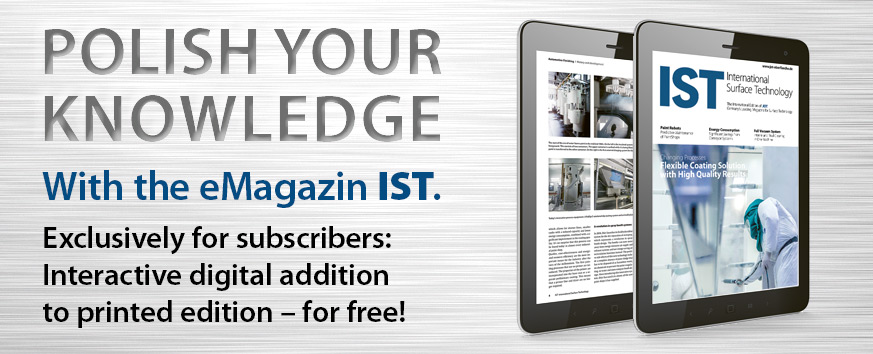The decoration of surfaces is a very old subject, from cave paintings in the Stone Age to Chinese lacquer art in the 5th century BC to industrialisation at the beginning of the 20th century, for example in the industrial painting of automobiles by Henry Ford. Against this temporal background of many millennia, it is not surprising that processes of change in painting technology often proceed somewhat more slowly than in the IT industry, for example. Nevertheless, the painting industry also has to face new challenges. Important new demands in industrial painting technology concern, for example, the high wage costs in Europe and the lack of skilled workers in the field of surface technology. This leads to the need for further automation in areas where manual processes were previously more efficient. Along with this, there is also an increasing demand for a wide range of variants, small quantities and general flexibility. So far, there is no universally valid ideal concept of how to plan a paint shop today that will still be cutting-edge in 20 years' time.
Resilience as a new paradigm
In addition, the issue of sustainability is becoming increasingly urgent and important. Since surface technology makes a significant contribution to a production plant's energy requirements, meeting this target requires that all energy-saving potentials be exploited. In addition, the paint shop is often a major source of solvent emissions, so this issue also needs to be addressed again. The current ongoing pandemic crisis shows very clearly that in future companies will have to learn to deal better with unforeseen events: be it changes in the supply chain, a changed market situation or new legal framework conditions. In this context, resilience - i.e. the ability to quickly return to an orderly state after a disruption - seems to be a new paradigm that must be increasingly taken into account in the design of processes in the future.
Digital methods increase flexibility
This results in a trend towards further automation, but under the new secondary condition of a high degree of adaptability. This means that approaches leading to disruption will be necessary here. The first measures going in this direction, which are already taking hold, are digital methods to be able to react more flexibly on the one hand and to create a better overview of the processes and be able to react to deviations on the other. In order for the plants to be able to react autonomously, machine learning algorithms are also being used, which learn the interrelationships based on the available data. To reduce the complexity to a manageable size, it makes sense to combine these algorithms with the knowledge of the worker and the results from numerical simulations. An example would be the prediction of surface quality from atomisation parameters, paint properties and process-related variables, which has seen significant progress in recent years. The important bottom line from projects in this field is that paint chemistry/physics and process technology must go hand in hand. One example for the future could be the automatic creation of painting programmes in order to cope with the diversity of variants. The first projects are already underway.
From robot arm to drone
In the future, the classic jointed-arm robot will presumably not be the only moving apparatus for application technology. Many activities - especially repair work - will have to be carried out on site. Current studies are therefore examining the use of mobile platforms, for example for coating ships. Even more flexible would be the use of drones with spraying equipment.
By combining all these ideas, a factory layout could look very different in the future. The hitherto usual central surface technology plants, which are very large in relation to the objects to be coated, could be divided into small compact painting modules, each of which would be installed at the right place in the process. This is made possible by the fact that the coating units no longer need complex air technology and the coating is cured in the best case in the shortest possible time, for example with UV radiation. This means that the parts can be processed immediately after coating.
Of course, there will also be changes on the coating side: More and more functions will be integrated and the coating structure will become more compact until a multifunctional coating layer may be sufficient for most applications. This can be made possible by stratifying coatings in which, for example, the pigments are arranged in the coating layer after application in such a way that functions and properties in the film cross-section become different. In addition to protection and appearance, coatings can also fulfil other functions. For example, it is possible to integrate sensor technology into coatings, for example with regard to proximity, and finally to equip the painted surface with actuators, for example in the form of colour change or with lighting effects.
The complete article was published in German in the JOT issue 07/08.
Autor(en): Dr. Oliver Tiedje, Fraunhofer-Institut für Produktionstechnik und Automatisierung IPA







